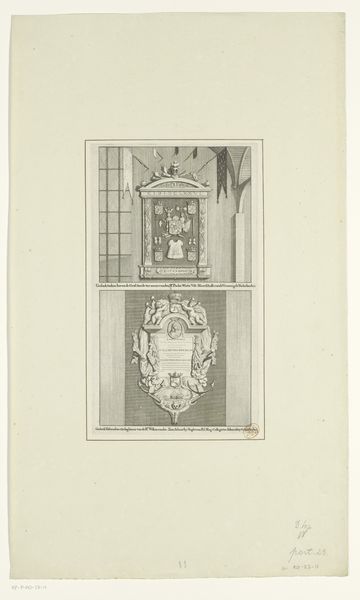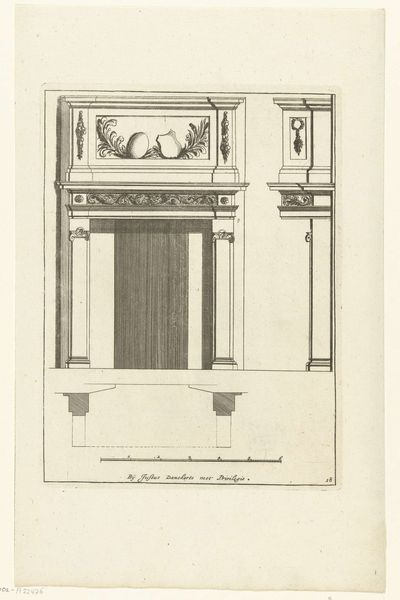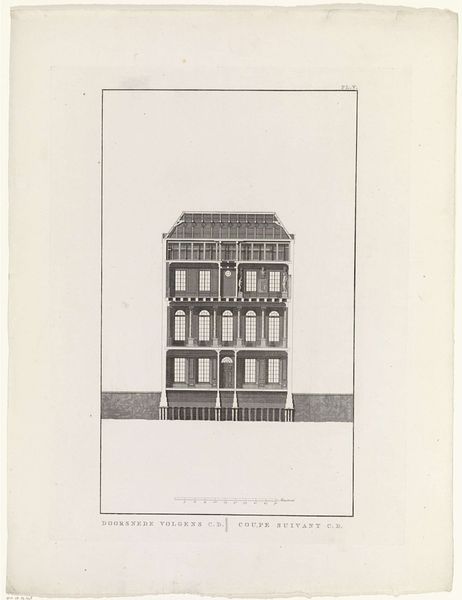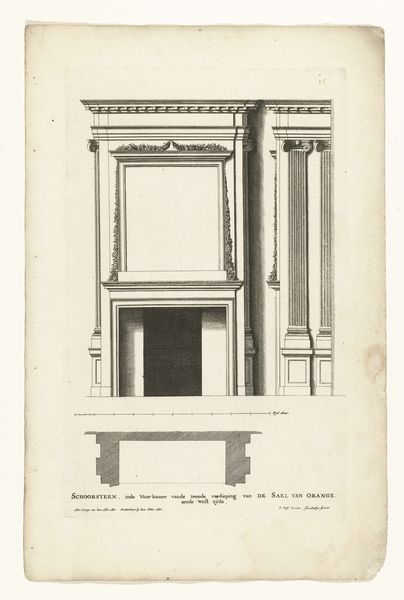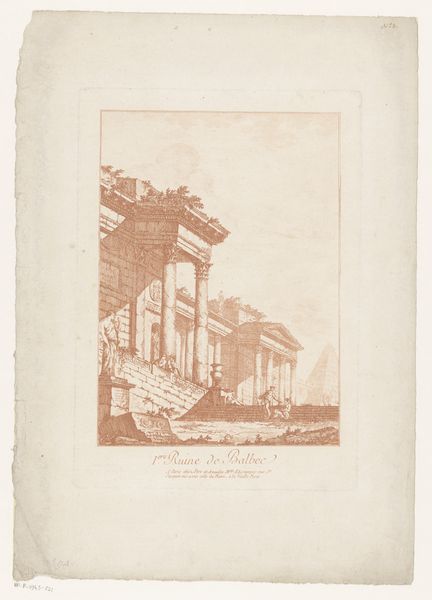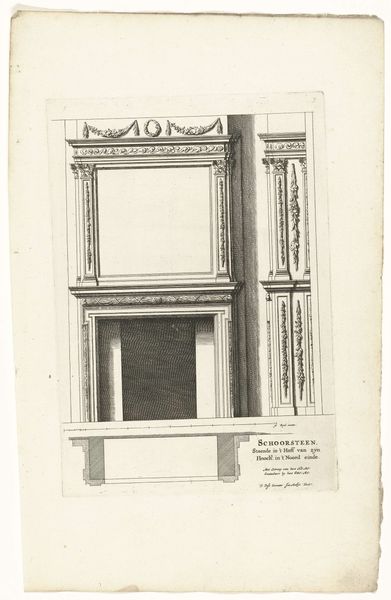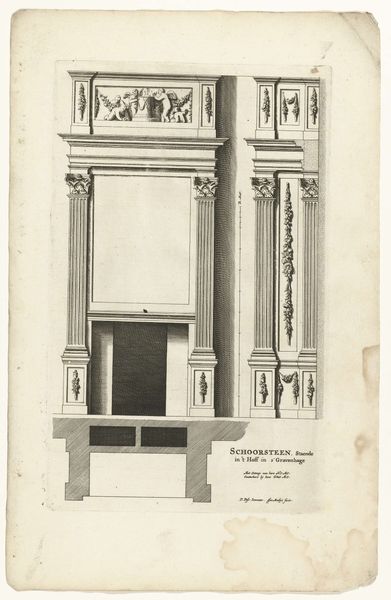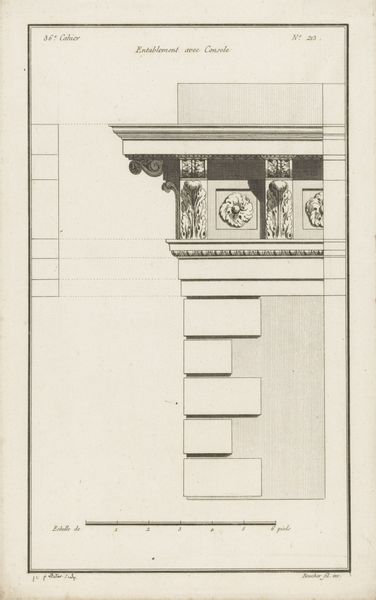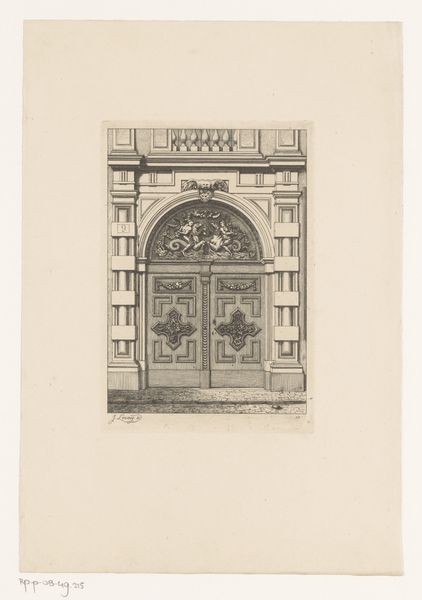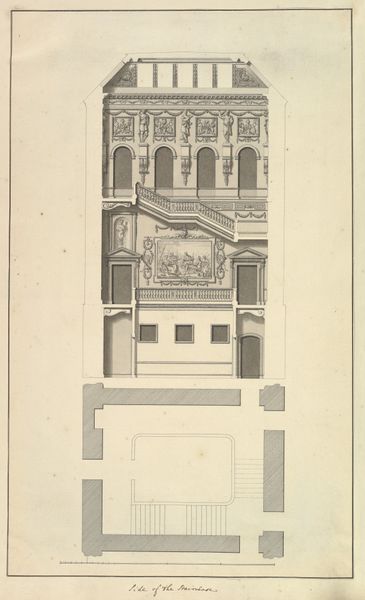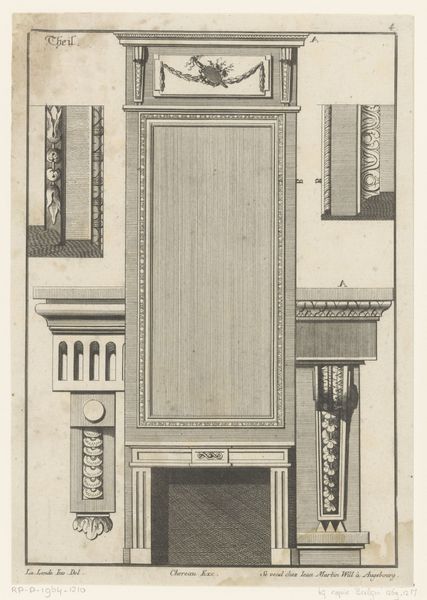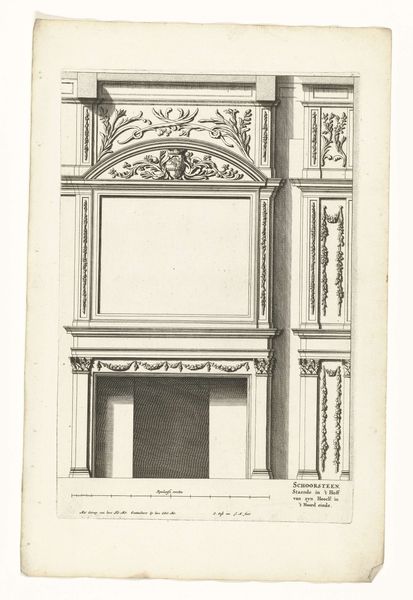
Illuminatie voor het huis van Jan Jacob de Bruyn te Amsterdam, 1788 1788
0:00
0:00
janlucasvanderbeek
Rijksmuseum
print, engraving, architecture
#
neoclacissism
#
ink paper printed
# print
#
old engraving style
#
form
#
line
#
cityscape
#
engraving
#
architecture
#
realism
Dimensions: height 229 mm, width 158 mm
Copyright: Rijks Museum: Open Domain
Curator: At first glance, this print evokes a festive, celebratory atmosphere, almost theatrical. Editor: Indeed. Let's delve into this engraving further. This piece is entitled "Illuminatie voor het huis van Jan Jacob de Bruyn te Amsterdam, 1788." It was created by Jan Lucas van der Beek in 1788 and currently resides at the Rijksmuseum. It offers us a glimpse into the socio-political currents of that time. We see a house, presumably belonging to Jan Jacob de Bruyn, illuminated. Illuminations like these were often used to celebrate or commemorate significant events or individuals, often tied to power and societal elites. Curator: Focusing on the graphic elements, the repetitive, almost obsessive line work used to depict the illumination is fascinating. It's like a highly formalized cityscape with a theatrical stage on the ground level. The contrast between the dark, almost somber tones of the building’s facade and the shimmering white lights is remarkable, achieved purely through skillful engraving. It draws your eye, forcing you to analyze how the light plays across the surface. Editor: Precisely, and it's crucial to remember that the “illumination” was not simply about aesthetic appeal. It was a powerful symbol of status and allegiance. Considering the political tensions in the late 18th century, public displays like these could also signal one's political leanings. Who was Jan Jacob de Bruyn and what were his politics? Did this elaborate display serve a specific purpose amidst broader societal divisions? How did he acquire that wealth? The choice to commemorate De Bruyn reflects an endorsement of the economic and social structures that support him. Curator: That interpretation is supported by the arrangement of elements within the facade itself: notice the balance and symmetry, which create an ideal image celebrating both rational order and private wealth. It’s interesting how Van der Beek chose to represent architecture not merely as shelter, but as a structure and conduit for disseminating social standing. Editor: Yes, in exploring this visual document we reveal a tableau of politics, power and propaganda of the time. Curator: Absolutely, analyzing the artistic composition with its inherent social implications adds a significant layer to this print. Editor: Looking at Van der Beek's choice of technique, we see the artistic skill employed here is subservient to the broader implications of this singular architectural form.
Comments
No comments
Be the first to comment and join the conversation on the ultimate creative platform.
